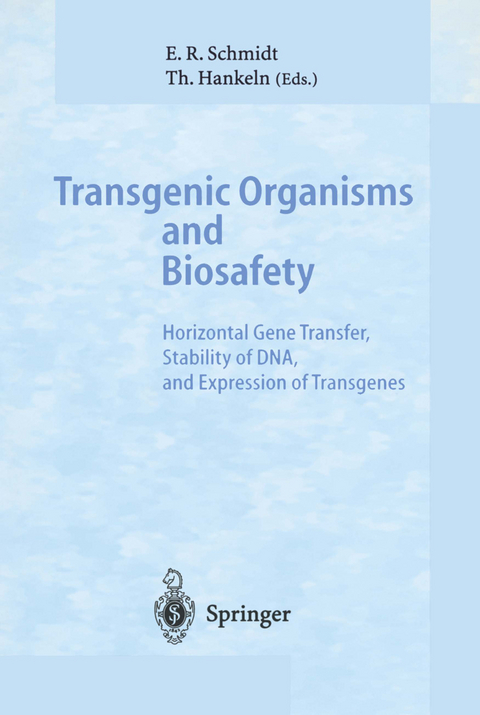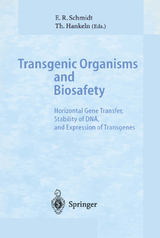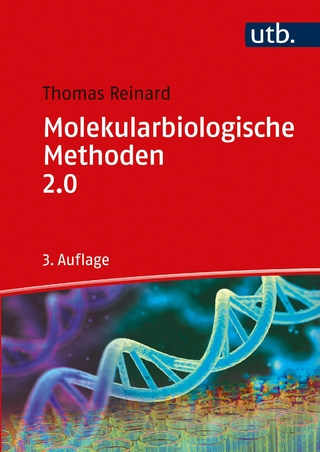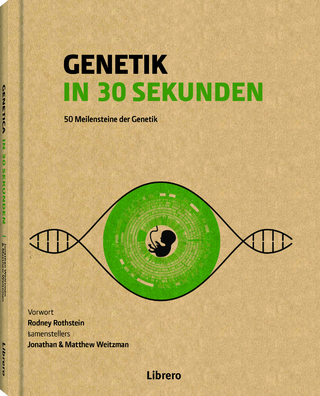Transgenic Organisms and Biosafety
Springer Berlin (Verlag)
978-3-540-61077-9 (ISBN)
I Horizontal Gene Transfer.- 1 Gene Transfer Between Organelles and the Nucleus in Lower Eukaryotes.- 2 Horizontal Transfers and the Evolution of Transposable Elements.- 3 Transposable Elements in Baculoviruses: Their Possible Role in Horizontal Gene Transfer.- 4 From Gene Transfer to Risk Assessment: Experiences with Genetic Variability in Baculoviruses and New Approaches to Analyse the Reaction of Microbial Communities to Stress Factors.- 5 Examination of the Putative Horizontal Gene Transfer from Transgenic Plants to Agrobacteria.- 6 Can Agrobacteria Be Eliminated from Transgenic Plants?.- 7 Preliminary Findings of DNA Transfer from Transgenic Plants to a Wild-Type Strain of Aspergillus niger.- 8 Gene Dispersal from Transgenic Crops.- 9 Evaluation of Potential Gene Transfer from Transgenic Plants.- 10 Efficiency of Horizontal Transfer by Natural Genetic Transformation of Plasmids with Homology to the Pseudomonas stutzeri Chromosome and the Effect of DNA Restriction.- 11 Accidental Formation of Replication-Competent Viruses from Gene Transfer by Retroviral Vectors.- 12 Transgenic Expression of a Toxin-Coding Killer Virus of the Yeast Zygosaccharomyces bailii in Saccharomyces cerevisiae: Genetic Evidence for a Possible Function of "Cryptic" Mycoviruses in the Evolution of Their Hosts.- 13 Foreign DNA in Mammalian Cells and Organisms.- II Stability of DNA.- 14 Persistence of DNA in the Environment and Its Potential for Bacterial Genetic Transformation.- 15. Persistence of DNA in Natural Soils: Adsorption to Particulate Material Provides Protection Against Nucleolytic Degradation.- 16 Degradation of Transforming DNA in a Groundwater Aquifer Microcosm by the Extracellular Nuclease of Serratia marcescens SM6 and Application of the Nuclease in a New Conditional Suicide System for Escherichia coli.- 17 A Conditional Suicide System for Genetically Engineered Bacteria Based on the Endonuclease I Gene of Escherichia coli.- 18 Identification and Characterization of Extrachromosomal Circular DNA Released from a Genetically Modified Chromosome of Hansenula polymorpha.- 19 Instability of Tandem Repetitive DNA in "Natural" and Transgenic Organisms.- III Expression of Transgenes.- 20 Range of Expression and Transmission Instability of the Kanamycin-Resistancc Reporter Gene in Direct Gene Transfer Experiments.- 21 Variability of Organ-Specific Expression of Reporter Genes in Transgenic Plants.- 22 Heat-Induced Loss of Transgene Activity Detected and Analysed in Several Transgenic Nicotiana tabacum Lines.- 23 Quantification of Heat Treatment-Induced Transgene Silencing Using Single Cells of Nicotiana tabacum.- 24 Genetic Stability and Expression of Foreign Genes in Transgenic Lines of the Legume Vicia narbonensis.- 25 Characterization of a Plant Scaffold-Attached Region from a T-DNA Integration Site.- 26 Expression of Antibody Single-Chain Fragments with Specificities to Structural and Nonstructural Proteins of Beet Necrotic Yellow Vein Virus in Plants: An Alternative Approach To Produce Virus Resistant Plants.- 27 Gene Transfer in Aspen.- 28 Manufacture of Proteins Based on Recombinant Chinese Hamster Ovary Cells: Assessment of Genetic Issues and Assurance of Consistency and Quality.- IV Field Release of Transgenic Plants.- 29 Out in the Open: Field Trials with Genetically Modified Crop Plants in Four European Countries, Chile and the United States.- 30 How Will Transgenic Sugar Beets Behave in Natural Plant Communities?.
| Erscheint lt. Verlag | 27.6.1996 |
|---|---|
| Zusatzinfo | XX, 335 p. 25 illus. |
| Verlagsort | Berlin |
| Sprache | englisch |
| Maße | 155 x 235 mm |
| Gewicht | 537 g |
| Themenwelt | Naturwissenschaften ► Biologie ► Genetik / Molekularbiologie |
| Naturwissenschaften ► Biologie ► Zellbiologie | |
| Technik ► Umwelttechnik / Biotechnologie | |
| Schlagworte | Activation • Biosafety • DNA • DNA-stability • genes • Genetic Engineering • gene transfer • Gentechnologie • Hardcover, Softcover / Biologie/Genetik, Gentechnik • HC/Biologie/Genetik, Gentechnik • Transgene • Transgene Expression • Transgenic Organisms |
| ISBN-10 | 3-540-61077-4 / 3540610774 |
| ISBN-13 | 978-3-540-61077-9 / 9783540610779 |
| Zustand | Neuware |
| Haben Sie eine Frage zum Produkt? |
aus dem Bereich




